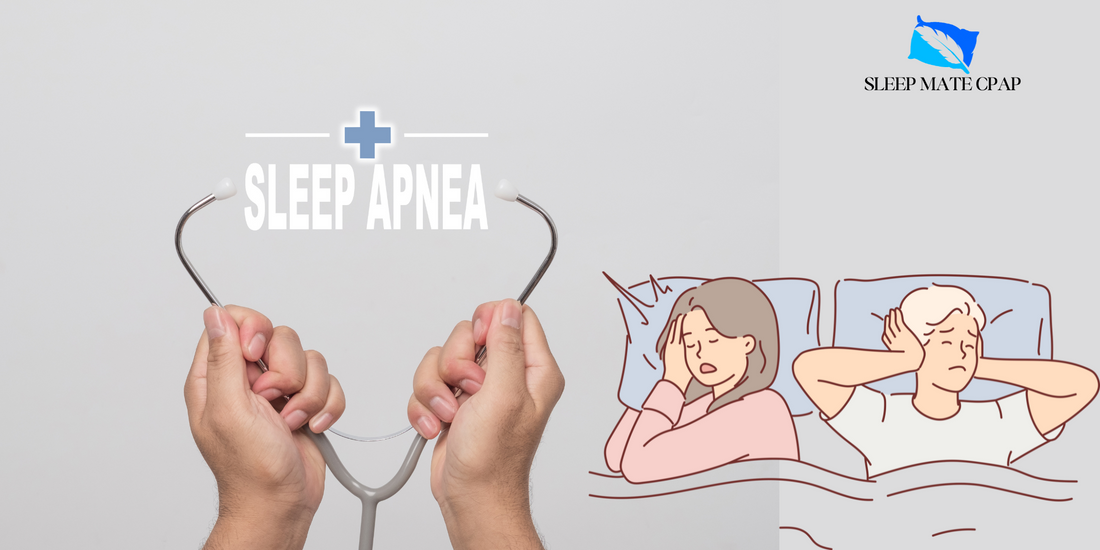
What Is Sleep Apnea? Your Complete Guide to Treatment Options & Recovery
Are you constantly exhausted despite sleeping through the night? Does your partner complain about your loud snoring or notice frightening pauses in your breathing? You might be one of the 30 million Americans living with sleep apnea – but here's the good news: effective treatments are available.
Understanding Sleep Apnea: A Life-Changing Sleep Disorder
Sleep apnea is more than just disruptive snoring – it's a serious medical condition where breathing repeatedly stops and starts during sleep. These interruptions can happen hundreds of times per night, depriving your brain and body of essential oxygen.
The Alarming Statistics:- 80% of sleep apnea cases remain undiagnosed
- Each breathing pause can last from seconds to over a minute
- Untreated sleep apnea doubles your risk of heart disease
- Treatment can dramatically improve quality of life
Types of Sleep Apnea
Obstructive Sleep Apnea (OSA)
The most common form occurs when throat muscles relax and block your airway during sleep. Think of it like a garden hose being pinched – air can't flow freely.
Central Sleep Apnea (CSA)
Less common but serious, CSA happens when your brain fails to send proper breathing signals. It's like having a faulty automatic breathing switch.
Warning Signs You Shouldn't Ignore
| Night-time Symptoms |
Daytime Red Flags |
|
|
Sleep Study A sleep study, conducted overnight in a specialised sleep laboratory, can confirm a diagnosis of OSA. During a sleep study, a sleeper is monitored by a variety of devices that measure and record certain body functions. Measurements include breathing patterns, the level of oxygen in the blood, and sleeping position.
|
Apnea-Hypopnea Index (AHI) in Adults
|
Symptoms
|
|
|---|---|---|
|
Mild
|
5 to 14
|
|
|
Moderate
|
15 to 30
|
|
|
Severe
|
More than 30
|
|
What Could Happen If OSA Goes Undiagnosed?
OSA can lead to potentially serious consequences if left untreated. Possible complications of obstructive sleep apnea include:- Motor vehicle accidents
- Reduced attention span and memory
- Mood changes and depression
- Sexual dysfunction
- Heart disease and stroke
- Type 2 diabetes
These complication may be caused by several factors related to sleep apnea, including the effect of sleep loss, repeated frops in amount of oxygen in the blood and changes in heart rate and blood pressure.
Obstructive Sleep Apnea Treatments and Devices
Obstructive sleep apnea (OSA) requires ongoing, nightly management to maintain healthy breathing patterns, improve sleep quality, and alleviate related symptoms. Treatments typically include positive airway pressure (PAP) therapy and lifestyle modifications. For those who can’t tolerate PAP therapy or find it ineffective, other options such as oral appliances or surgery may be recommended.
PAP Therapy
Positive airway pressure therapy works by delivering pressurized air to keep the airway open. It’s highly effective for most OSA patients and is considered the gold standard by sleep specialists.
Types of PAP therapy for OSA include:
- CPAP (Continuous Positive Airway Pressure): Provides a consistent, fixed stream of air to maintain an open airway.
- BiPAP (Bilevel Positive Airway Pressure): Delivers two distinct pressure levels—higher for inhaling and lower for exhaling.
- APAP (Auto-Adjusting Positive Airway Pressure): Adjusts air pressure automatically throughout the night based on a person’s needs.
Alternative options to CPAP therapy, like expiratory positive airway pressure (EPAP), offer solutions without a bedside machine. EPAP devices, which are inserted into the nostrils, help maintain an open airway using the pressure generated by a person’s own breath.
Oral Appliances
Oral appliances are worn in the mouth to reposition the jaw and tongue, reducing the risk of airway blockage. Though not as effective as CPAP for moderate to severe OSA, these devices can help alleviate snoring and are often suitable for mild cases.
Surgery
Surgical treatments aim to expand the airway or prevent blockage. Surgery may be recommended if other methods prove ineffective or to enhance the effectiveness of CPAP. For children with OSA, surgery to remove enlarged adenoids and tonsils is often the first line of treatment, as this can significantly improve nighttime breathing.
Long-Term Success Strategies
- Annual equipment evaluation
- Regular medical check-ups
- Update treatment as needed
- Monitor symptom changes
Take Action Now
Don't let sleep apnea continue affecting your health and quality of life. Modern treatments are more comfortable and effective than ever before. Schedule a consultation with a sleep specialist to start your journey to better sleep.
Quick Action Steps
- Document your symptoms
- Complete recommended testing
- Choose appropriate treatment
- Follow up regularly with healthcare providers
Remember: 80% of SA cases go undiagnosed, but treatment success rates are remarkably high. The sooner you seek help, the sooner you can return to restful, rejuvenating sleep.
Looking for more information about SA treatment options? Contact a sleep specialist in your area to discuss which solution might work best for you.
- https://www.ncbi.nlm.nih.gov/books/NBK459252/
- https://www.uptodate.com/contents/pathophysiology-of-upper-airway-obstruction-in-obstructive-sleep-apnea-in-adults
- https://www.uptodate.com/contents/clinical-presentation-and-diagnosis-of-obstructive-sleep-apnea-in-adults
- https://aasm.org/resources/pdf/sleep-apnea-economic-crisis.pdf
- https://www.uptodate.com/contents/obstructive-sleep-apnea-overview-of-management-in-adults
- https://www.uptodate.com/contents/sleep-apnea-in-adults-beyond-the-basics

